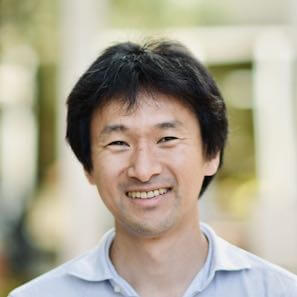Subscribe
Subscribe Now to receive Goldsea updates!
- Subscribe for updates on Goldsea: Asian American Supersite


Takuya Kitagawa had recently spent a decade scaling up Rakuten's international AI operations from one employee — himself — to over a thousand when he was approached by QuEra, a startup spun off from research by a Harvard/MIT team.
QuEra saw Kitagawa, himself a respected computer scientist, as the president who could lead the company's business development by conceiving and executing a growth strategy, raising capital and assembling teams for research, manufacturing, marketing and sales.
Kitagawa was drawn to the project in part because he liked the prospect of working closely with the founders on the best way to develop a technology that has several key advantages over the superconductivity-based strategies that had prevailed in the quantum computing sector.
One stumbling block to the building practical quantum computing systems has been the need to cool quantum processors to near absolute zero — lower than the temperature of deep space — in order to achieve superconductivity.
But recently the Harvard and MIT researchers behind QuEra had succeeded in developing a modality that uses laser tweezers to arrange rubidium atoms in matrices that can be manipulated to display quantum processing capabilities at room temperatures.
The so-called neutral atom technology dispenses with the intensely power-hungry and space-consuming array of refrigeration equipment while avoiding the high error rates of superconductivity-based modalities. It also dispenses with the need to rely on unstable electrons or other charged ions. Rubidium was chosen precisely because it is the most stable atom known, with only two isotopes. Its less stable isotope has a half-life greater than the known age of the universe.
In mid-February 2025, after Kitagawa had been with QuEra for barely four months, Google and Softbank agreed to invest $230 million, giving QuEra the capital needed to begin scaling up operations and conduct proof of concept studies.
In its first notable POC study QuEra teamed up with pharmaceutical firms Merck and Amgen, and Deloitte for data science support and validation, to show that its neutral atom quantum computer could infer predictions about useful molecules even where data is scant, as is often the case with small-scale early-stage drug studies, especially those meant to address relatively rare conditions.
The study was successful, proving that the predictive inferences QuEra extracted using its so-called quantum reservoir computing technique were markedly better than those provided by conventional computers.
As QuEra progresses with demonstrations of its technology, the many practical advantages of engineering large-scale quantum computers using neutral atom modality may prompt quantum computing leaders to reconsider their focus on superconducting quantum processors.
To date the most advanced quantum processors are considered to be Google's Willow chip, which boasts 105 superconducting transmon qubits, and Microsoft's Majorana 1 chip, which uses superconducting topological qubits. Both types of chips only function when nestled snugly at the bottom of room-sized refrigeration units. And both are vulnerable to the disruptive effects of the slightest physical vibrations or the constant bombardment of cosmic particles that pervade all things.
Takuya Kitagawa was born in Nishinomiya, Japan. As a high school freshman Takuya spent a few months attending high school in Wisconsin and in San Antonio, Texas. His US experience influenced his decision to attend Harvard, where he majored in mathematics and physics.
His nine years at Harvard included his PhD program focusing on artificial intelligence. As he was concluding his Harvard study he was invited by the CEO of Rakuten to come lead their as-yet non-existent AI department. By the end of his sixth year Kitagawa was running Rakuten's R&D, as well as the fast-growing AI operations spanning Japan, China, Singapore, India, France and the U.S.
Kitagawa and his wife have a two year old son.
"I honestly never thought of myself as someone who really loves spending time with children," he told TheIroha magazine. "However, my wife and I experienced challenges in conceiving a child, and this experience made me appreciate having a child and family a lot more than before. In the U.S. we don’t really go out at night, so I spend a huge amount of time with my family."
His other passion is promoting well-being on the global level, and founded with friends the Well-Being Foundation for Planet Earth. The Foundation supports academic studies of how to measure and promote well-being within society. It urges the Japanese government to include well-being as a national goal — and apparently succeeded. At the most recent G7 meeting Japan proposed that well-being be measured along with GDP.
The Well-Being Foundation has urged the Gallup organization to add more questions pertaining to Eastern and Asian cultural perspectives on societal wellness to its World Happiness Report survey. In addition to focusing on the well-being of individuals, they were able to add a question that reflects Asian cultural focus on collective well-being. Another concept promoted by the Foundation is the value of connecting with Nature.
"Contributing to this global well-being assessment has been very exiting and important to me," Kitagawa said.
